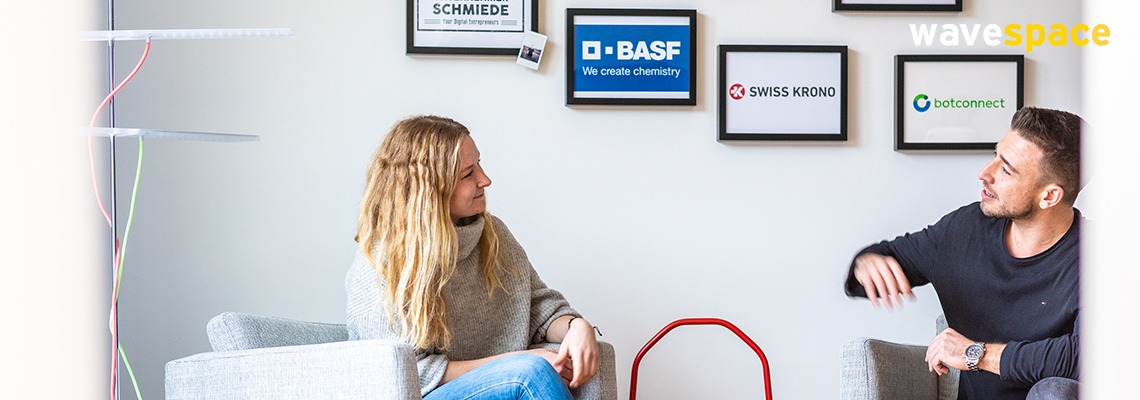The winning formula for digital new business: go beyond the core organization
02. March 2017
As of 2017, managers are past the question of whether digital transformation plays an important or a vital role in core business. The majority of top-level managers have already recognized the significance of digital transformation. Now the predominant questions are: “How do I prepare my enterprise for digitization?”, “How do I set up my core business to remain relevant in the digital age?”, or “Will digitization lead to new customer behavior, making a new business model essential?”, and last but not least: “How can I motivate and engage my employees?”
Core business as an impediment
One thing is certain: Every company’s core business is guided by processes, clearly defined responsibilities, and hierarchies. This is positive for business-as-usual, as it guarantees high-quality products and a smooth operation within the enterprise. However, if digital innovation or even disruption are the goal, the core business becomes a force preserving the status quo, and can act as an impediment. Why? Innovation requires completely different conditions, and a fundamental change in thinking. It’s foundations are speed, risk-taking, agile development and testing – driven by people who do not only possess digital know-how, but are also open to change.
The core organization typically lacks these characteristics. The only innovation to be found there relates to streamlining processes. Working on new or even disruptive business models is not a focus. In addition, there can be a fear of digital change, and loss of influence or even a loss of jobs. In this environment, stakeholders are not likely to question their own business model and actions. However, this is what digital transformation is all about.
Innovation in a protected space
The solution is to go outside the core organization, and develop and test new ideas in a protected space – isolated from existing processes and structures. Within this space, which can be established as an internal unit close to the enterprise – or as a stand-alone digital unit at a different location, teams can rethink everything from scratch, try and fail, and create prototypes of digital business models within a short period of time. Whether this space is close to the enterprise or not, the key factor is that this unit can work independently – according to its own rules and methods.
A company that has been following this approach for years is CEWE COLOR. Founded as a traditional photographic printing enterprise for Agfa and Kodak film spools, CEWE is currently Europe’s leading digital player in the area of photograph and image processing. In 2002, CEO Rolf Hollander realized that digitization would radically change the photography market. While competitors did not take the ‘new economy’ bubble seriously, Hollander paved the way and created a protected space for innovation. Hollander transformed a warehouse, which he hermetically sealed from the rest of the enterprise, and installed a digital printing machine and a couple of computers. Then he asked a small group of employees to think about new ideas and products – without any pressure to succeed or to generate revenue. The solutions created in this protected space, which the CEWE core organization and their employees regarded as questionable, currently constitute the main business area – now the core of the enterprise.
CEWE is not the only example of successful innovation beyond the core organization. Schindler, the Swiss manufacturer of elevator systems and escalators, and the steel traders at Klöckner & Co use digitization in a protected space. They both have gone one step further than CEWE, by establishing an entirely independent digital unit. The Schindler Digital Business unit formed by CIO Michael Nilles develops innovations in the area of digital building management, as well as intelligent solutions for mobility and predictive maintenance. These innovations are now applied throughout the entire enterprise. When establishing its digital unit called kloeckner.i, Klöckner also made geographical changes. Instead of working at the headquarters in Duisburg, young developers are designing the future of steel trading in Berlin. In 2016, Klöckner generated EUR 700 million in revenue through digital channels alone. Klöckner’s CEO, Gisbert Rühl, is often quoted stating that these achievements would not have been possible working from within the enterprise.
Captivate with data rather than only with words
Both Schindler CIO Nilles and Gisbert Rühl have become firm advocates of digitization – within their own enterprises, their industries, and beyond. Michael Nilles explains: “Digitization is now firmly established as an integral part of Schindler’s DNA. Digital business has found its way into day-to-day operations.”
The key to digitally transform core business successfully does not just depend on top-level management. The most effective way to earn buy-in is by delivering results. Developing and testing new business models on a small scale is essential, because products that have been validated on the market successfully, with supporting data, will naturally gain the interest of the core organization – and adoption will occur rapidly.
For example, the successful digital solutions developed by kloeckner.i led to a boost in motivation among the staff at the headquarters in Duisburg. Recently, Rühl pointed out to me that the core staff now drive various digital initiatives within the core organization on their own. That is the definition of successful transformation in my book!





* Required field